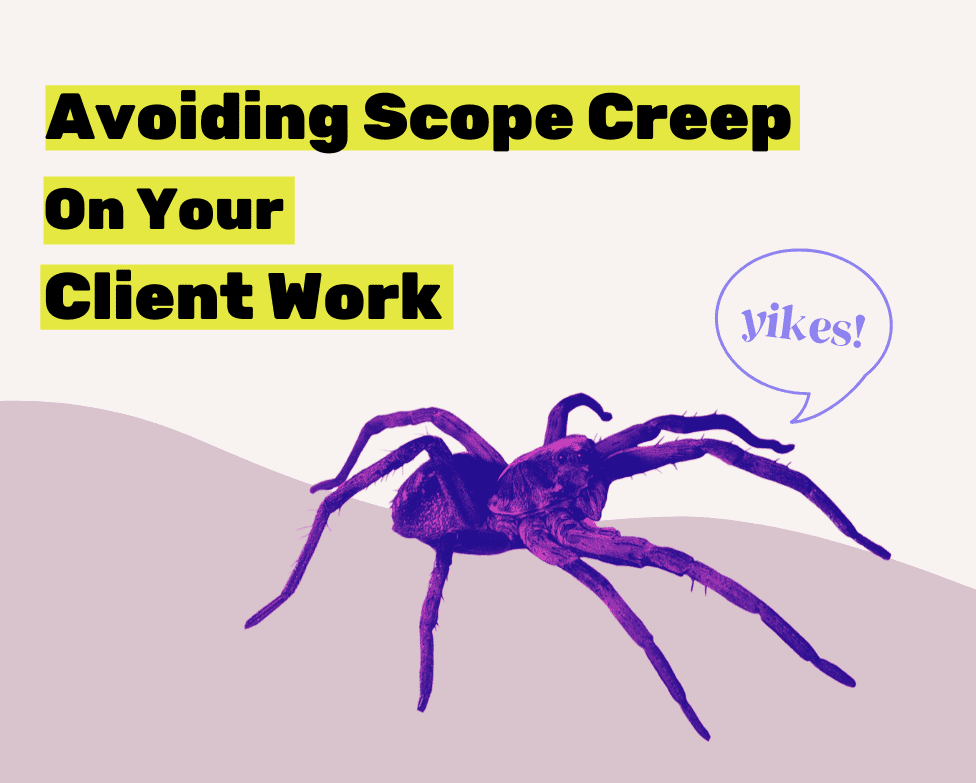So you landed a client, you get your contract signed, and you are in the throws of working away on the project. Your days are filled with awesome design inspo and sometimes when you are working you might look a little like this…
What happens when you have that client that you like working with and they begin asking for things that are not quite in the scope of a project? You don’t want to lose their business by saying no, but you also just can’t “change that page layout a little bit” one more time. Let us just encourage you…
“You’re not going to lose clients over treating yourself fairly.”
– Weeknight Website
Navigating the waters of a good client relationship is all about honesty, we talked about it in our blog on rocking client communication for an awesome project experience. (hint hint 😉) You also need to make sure you have good boundaries in place so that clients know exactly what to expect from you! This will lead to happy clients lots of referrals, great long-standing client relationships, and most importantly, a happy YOU!
What to do About Scope Creep with Your Client Projects
This how to avoid feeling #awkward about addressing scope creep with your clients and never feeling taken advantage of when it comes to the “little” changes.
#1 Make sure you have a defined project contract
This is the thing no one ever wants to hear, however, this one change alone helped me scale from a website design agency making $600 – $700 a project to landing $3k+ projects in less than 1 year, and that was just starting out!
When you have a contract, you look sups profesh. Clients realize that you have put thought and time into anything you proposal and they have an automatic trust meter that goes “ding ding” when you say “sure, client I am excited to work wwith, let me send over a contract and formalized proposal for your approval.”
This also tells them that you have boundaries right away, which means that they have to treat you with respect and that your boundaries are there to protect you both.
Our favorite spot for a template contract for designers is AIGA the professional association for design.
#2 Don’t Let it Stress You Out
Making sure you are clear about your boundaries is NOT just for your client, it is for you as well! Mental health and managing your stress levels is really important when you are a designer or content creator. The thing to know is that even with the BEST client in the world, this can easily happen to your project.
By allowing a project to become bigger than the scope laid out can leave you struggling to say inspired and on task. This can become especially overwhelming when the project drags on for weeks past the due date and you can not take on new work, but you are also not getting paid for all. the extra hours. #thestruggleisreal
Make sure you clearly articulate in writing what is included in your project and what is an additional fee. and if you do say yes to additional work on a project…
#3 Remember the Money is in the Invoicing
It can feel intimidating to send an additional invoice when a project goes out of scope. I have literally lost thousands of dollars this way in the past, so take it from me, do not do this to yourself!
The best way to avoid awkwardness is to make sure you have additional requests from the client in writing. Send them a quote for the additional work, and then send the invoice as soon as you complete the additional work. This is outside the project you are working on and should be invoiced and paid right after the work is complete, just like any other smaller job requests would be.
If the client pushes back, you can always refer them to the contract that you (obvi) set up because you are a well-protected boss lady, running a super successful biz!

